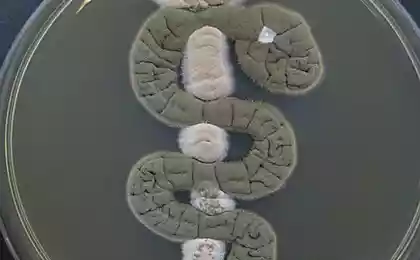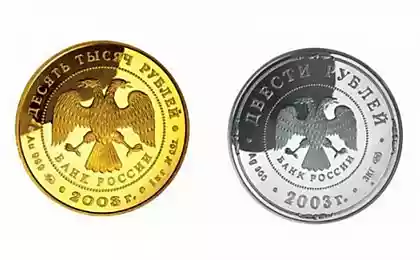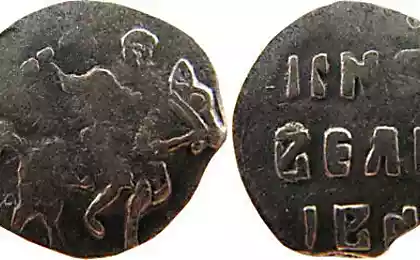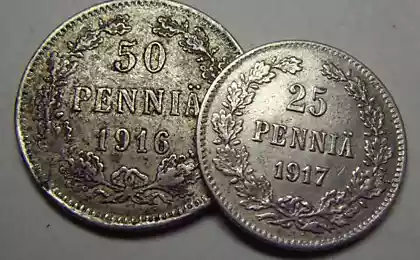629
Silver against 650 types of bacteria!
The silver (= Argentum) (Ag) against 650 types of bacteria!
Silver in the human body has a pronounced antibacterial, antiseptic, anti-inflammatory, astringent. However, today silver is not considered vital for the human body to ultramicroelements.
The daily requirement of the human body is not precisely determined, the average daily intake of silver is about 7 ág. The bioavailability of silver, which is determined by the magnitude of absorption from the gastrointestinal tract, equal to 5%.
Thirty million two hundred forty eight thousand eight hundred sixty two
Possible resorption of silver through the skin and mucous membranes. Silver in small quantities is found in all organs and tissues; the average content of this element in the body of mammals reaches 20 mg per 100 g of dry weight. Most rich in silver, the brain, lungs, liver, red blood cells, pigment membrane of the eye and the pituitary gland. Silver is excreted from the body mainly through the bowel.
The biological role in the human body
In the human body silver forms complexes with plasma proteins in the blood (globulins, albumin, fibrinogen, hemoglobin, etc.), inhibits the sulfhydryl group (HS–) of enzymes, inhibiting their activity, and inhibits cell respiration.
Under the influence of silver myosin, the primary protein in human muscle tissue loses the ability to break down ATP.
It is assumed that silver plays an important role in ensuring processes related to higher nervous activity and functions of the peripheral nervous system.
Silver has a strong bactericidal, antiseptic, anti-inflammatory, astringent. Silver – natural bactericidal metal effective against 650 kinds of bacteria which do not acquire resistance to it (unlike most antibiotics), as well as against many protozoa (flagellates, ciliates) and viruses. It is believed that silver inhibits enzymes controlling energy metabolism of infectants. Found that white blood cells can phagocytose silver and deliver it to the focus of inflammation.
Prolonged contact with silver in the production conditions, the silver can accumulate in the liver, kidneys, skin and mucous membranes.
Synergists and antagonists of silver
Silver is an antagonist of copper (causes inhibition of Cu–dependent enzymes).
Signs of insufficiency of silver. Causes and main manifestations of deficiency of silver in the body has been insufficiently studied. There is evidence that the decrease in silver concentration in the organism is observed deterioration of health, headaches, fatigue, decreased immunity, impaired function of the cardiovascular system, dilate veins and arteries, increases the concentration of cholesterol in the blood.
The main manifestations of excess silver: the symptoms of Central nervous system; disorders of vision due to deposits of silver in the retina of the eye, lowering blood pressure, brown or grayish skin and mucous membranes (argyria), pain in the right hypochondrium, enlarged liver; gastritis, nausea, vomiting, diarrhea; argyria the formation of deposits of silver in the skin (with chronic exposure).
Drink water with silver ions is not necessary! Silver, like gold, – cellular toxin, a xenobiotic. Silver ions replace the ions of trace elements in enzymes, such as cobalt ion, which is responsible for metabolism and reproduction. This leads to disruption of cell function and death. The constant use of silver even in small doses can cause chronic disease associated with a high content of silver in the body is argyria (argentos).
According to who, are harmless to humans is the total accumulated dose that the person can receive over a lifetime (70 years) equal to 10 g of silver, a single toxic dose of 60 mg, lethal – 1,3–6,2 g.
Silver must: with erosions, ulcers, excessive granulation, fractures, acute conjunctivitis, trachoma, chronic hyperplastic laryngitis, inflammation of the urethra and bladder (as an antiseptic), nervous diseases (neuralgia and epilepsy).
Food sources of silver: watermelons, cucumbers, dill, pine nuts, mushrooms, honey mushrooms, salmon, sardines, shrimp.
P. S. And remember, just changing your mind — together we change the world! ©
Source: www.pharmacognosy.com.ua/index.php/makro-i-mikro-chudesa/serebro-protiv-650-vidov-bakteriy
Silver in the human body has a pronounced antibacterial, antiseptic, anti-inflammatory, astringent. However, today silver is not considered vital for the human body to ultramicroelements.
The daily requirement of the human body is not precisely determined, the average daily intake of silver is about 7 ág. The bioavailability of silver, which is determined by the magnitude of absorption from the gastrointestinal tract, equal to 5%.
Thirty million two hundred forty eight thousand eight hundred sixty two
Possible resorption of silver through the skin and mucous membranes. Silver in small quantities is found in all organs and tissues; the average content of this element in the body of mammals reaches 20 mg per 100 g of dry weight. Most rich in silver, the brain, lungs, liver, red blood cells, pigment membrane of the eye and the pituitary gland. Silver is excreted from the body mainly through the bowel.
The biological role in the human body
In the human body silver forms complexes with plasma proteins in the blood (globulins, albumin, fibrinogen, hemoglobin, etc.), inhibits the sulfhydryl group (HS–) of enzymes, inhibiting their activity, and inhibits cell respiration.
Under the influence of silver myosin, the primary protein in human muscle tissue loses the ability to break down ATP.
It is assumed that silver plays an important role in ensuring processes related to higher nervous activity and functions of the peripheral nervous system.
Silver has a strong bactericidal, antiseptic, anti-inflammatory, astringent. Silver – natural bactericidal metal effective against 650 kinds of bacteria which do not acquire resistance to it (unlike most antibiotics), as well as against many protozoa (flagellates, ciliates) and viruses. It is believed that silver inhibits enzymes controlling energy metabolism of infectants. Found that white blood cells can phagocytose silver and deliver it to the focus of inflammation.
Prolonged contact with silver in the production conditions, the silver can accumulate in the liver, kidneys, skin and mucous membranes.
Synergists and antagonists of silver
Silver is an antagonist of copper (causes inhibition of Cu–dependent enzymes).
Signs of insufficiency of silver. Causes and main manifestations of deficiency of silver in the body has been insufficiently studied. There is evidence that the decrease in silver concentration in the organism is observed deterioration of health, headaches, fatigue, decreased immunity, impaired function of the cardiovascular system, dilate veins and arteries, increases the concentration of cholesterol in the blood.
The main manifestations of excess silver: the symptoms of Central nervous system; disorders of vision due to deposits of silver in the retina of the eye, lowering blood pressure, brown or grayish skin and mucous membranes (argyria), pain in the right hypochondrium, enlarged liver; gastritis, nausea, vomiting, diarrhea; argyria the formation of deposits of silver in the skin (with chronic exposure).
Drink water with silver ions is not necessary! Silver, like gold, – cellular toxin, a xenobiotic. Silver ions replace the ions of trace elements in enzymes, such as cobalt ion, which is responsible for metabolism and reproduction. This leads to disruption of cell function and death. The constant use of silver even in small doses can cause chronic disease associated with a high content of silver in the body is argyria (argentos).
According to who, are harmless to humans is the total accumulated dose that the person can receive over a lifetime (70 years) equal to 10 g of silver, a single toxic dose of 60 mg, lethal – 1,3–6,2 g.
Silver must: with erosions, ulcers, excessive granulation, fractures, acute conjunctivitis, trachoma, chronic hyperplastic laryngitis, inflammation of the urethra and bladder (as an antiseptic), nervous diseases (neuralgia and epilepsy).
Food sources of silver: watermelons, cucumbers, dill, pine nuts, mushrooms, honey mushrooms, salmon, sardines, shrimp.
P. S. And remember, just changing your mind — together we change the world! ©
Source: www.pharmacognosy.com.ua/index.php/makro-i-mikro-chudesa/serebro-protiv-650-vidov-bakteriy
This simple procedure smoothes the skin and slows down aging!
A new form of matter – a supersolid crystalline superfluid























